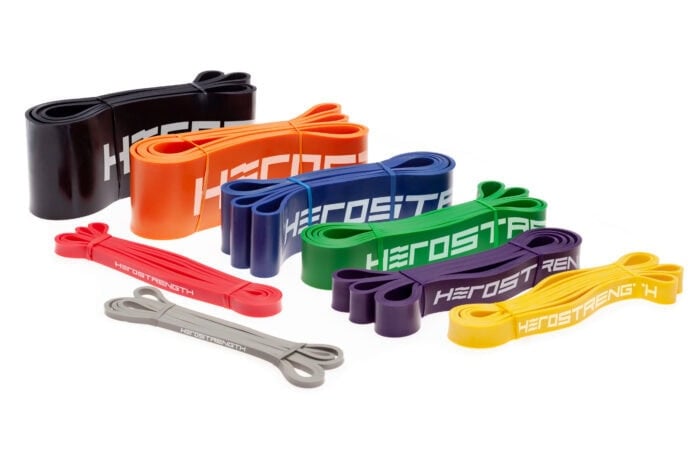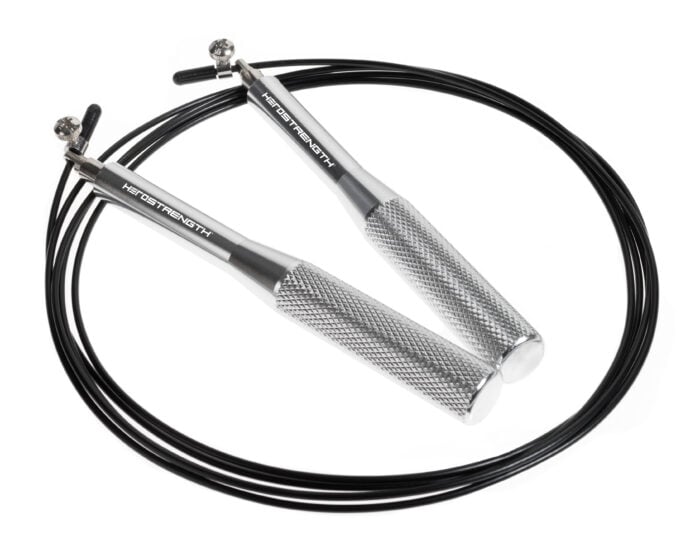Resistance band training is a great way to increase your speed. Resistance bands increase your strength and have a positive correlation to speed training.
Key Takeaways:
- Resistance band speed training is a great way to increase muscle strength and responsiveness.
- Versatile and affordable, resistance bands are great for on-the-go speed workouts.
- To get the most out of your resistance band workouts, be sure to vary your routine and try new exercises regularly.
Introduction to Resistance Band Speed Training
Bands apply tension to your muscles through resistance. Speed training aims to move your body weight as fast as possible, activating the fast-twitch muscle fibers and causing them to contract quickly. The quicker they contract, the faster you will be able to move. Moving your body weight quickly will force the resistance of the Speed Bands to fire more muscles, helping you increase speed.
Benefits of resistance bands for a speed workout
Speed Bands put tension on your muscles, increasing their effort to work. It feels as if the muscles in your hip flexors, quads, glutes, and hamstrings are holding back. Still, they are being activated with each movement and building muscle memory. Each time you use our bands in your speed workout, you will produce growth in your muscles so that they develop to reach their full potential for speed.
Overview of resistance bands for speed enhancement
Adding motion restriction with resistance bands increases agility and speed in your training regimen. By using resistance bands, you improve reaction time, accelerate foot speed, enhance quickness, and tone all the muscles you need to increase speed.
When incorporating speed and agility resistance bands into your workout, you will see a noticeable difference throughout your overall athletic performance and strength. By adding reps of resistance strength training, your muscles will be elevated to the next level when it comes to speed and mobility!
Recommended products
-
Hampton Hip Bands | 3-Pack
$29.00 -
Hampton Fit Bands
$9.00 – $72.00 -
Hampton Steel Speed Rope
$19.99
The Science Behind Speed Training and Drills with Resistance Bands
Resistance bands create variable resistance through elastic force, loading the muscle with greater resistance the harder you pull. The load of resistance bands often depends on the band’s thickness and how fully the band is stretched. They are easy to use, and a wide variety of exercises can be done using resistance bands.
With bands, you can easily adjust your workout intensity by either choosing a band with more resistance or by moving the band to different tension points on the body. Moving the band lower or higher on your legs will increase difficulty and create a more advanced workout.
Advantages of Resistance Band Speed Workouts
Resistance bands are cheap, versatile, and transportable. You can put them in your carry-on if you’re going on vacation and unsure if the hotel will have a gym. They allow you to train from various angles that dumbbells may not allow for. For example, you can push and pull them, which makes them great for rehab work. Bands also tend to be lower impact and easier on the joints, which might be a safer fitness option for people rehabbing an injury and older adults.
Key Components of Speed Training
Increasing athletic performance requires constant development of strength and power required from your workouts. You can implement different training methods (weightlifting, plyometric training, etc.) to increase strength and power. A relatively new method for strength and power development is velocity-based training. With VBT, athletes may establish the speed of the movement at which an exercise is performed. Velocity training is a relatively novel method and can be implemented with the proper training tools.
Practical Resistance Band Exercises for Speed Enhancement
High Knee Sprints with Resistance Bands
The High Knee Drill is one of the most basic exercises all athletes should be completing. It enhances muscle recruitment by exaggerating the motions of an elevated knee, and you’ll improve drive-through hip flex.
- Drive the knees up as fast as possible in a sprinting motion.
- Keep the back upright.
- Pump the arms and keep them at right angles.
- Work at maximum intensity for 12-15 second bursts (3-4 resisted sets).
- 20 seconds without the bands (2-3 sets).
Try not to use a hard surface to minimize impact.
Lunge Drives with Resistance Bands
The forward lunge is your standard lunge movement that works your hamstrings, quads, hips, and glutes. This is an excellent exercise for mobility and flexibility and building lower-body strength, helping you avoid injury in the future.
- Anchor your resistance band(s) at mid-level, slightly below your waist. Attach the band to a lifting or pulling belt meant for resistance training.
- Stand facing away from your anchor point.
- Step forward into a lunge position with your front knee at a right angle. During this movement, ensure your knee stays straight and upright and doesn’t collapse off to the side or bend past your toe. You also want to keep your back knee from touching the ground and maintain a straight back and shoulders throughout the movement.
- Step back to your original position, keeping your back and hips aligned upright, and repeat.
Sprints with Resistance Band Resistance
If you have some sprint training equipment, it can be very convenient–you can perform your sprint exercise at home, in your backyard, at the gym, or in a park.
The extra resistance you get from band sprints allows you to create a different, challenging environment for your muscles. If you run while using resistance sprint bands, you will see lifting gains in your leg muscles, better speed and jump height, and reaction time.
Not only is it helpful to use sprint bungee cords for sprint workouts, but you can also use a traditional resistance band to do other weight-training exercises to increase results.
Punching Drills with Resistance Bands
If you’re looking to get a kickass arm workout, resistance band training is a quick-fire way. Repeat the following for three sets:
- 10 seconds of non-stop jab-crosses at 50 percent intensity
- 10 seconds of non-stop jab-crosses at 70 percent intensity
- 10 seconds of non-stop jab-crosses at 100 percent intensity
REST. REPEAT!
Hip Flexion and Broad Jumps with Resistance Bands
The resisted broad jumps have the unique quality of heightening power and deceleration.
Resisted jumping bands provide an ascending resistance for plyometric exercises by dynamically improving power and explosiveness. Banded jumping can significantly enhance performance by harnessing the power of gravity to make more significant gains with each leap.
- Anchor the resistance band around hip-waist height to a fixed stationary object that will not shift or move, and then place the band around your waist.
- Walk out until the band is taut but not stretched.
- Spread feet apart to approximately a hip-width distance apart.
- Raise the arms above the head and swing them downward vigorously to initiate the movement.
- Explode forward off both feet simultaneously and land with the feet approximately shoulder width apart.
Perform 3-5 sets of 4-5 reps.
Agility Drills with Resistance Bands
Agility training helps us build the most impressive balance skills. As we know, maintaining balance while moving in agility training is much more complicated than it looks. Practice makes perfect when it comes to coordination. So don’t give up on your first try. Training agility improves our mind-body connection and solidifies the proper movements in our brains. Using bands to increase the challenge of agility training will ensure that you are next-level ready when it comes to competing.
Tips for Effective Resistance Band Speed Training for Fitness
To determine how to use resistance bands and which resistance is suitable for you, try to do various exercises with the resistance band to find out which one you can perform the entire exercise. If the band’s resistance is too much for you to control and your arm is getting pulled back, the band is too heavy for you.
Remember to start slow and get used to the feel of the band. Use proper techniques to prevent injuries and incorporate the bands into sport-specific routines. Once you get used to using bands, you will wonder how you ever made it through a workout without them!
Final Thoughts
There are many ways to incorporate bands into your workout. They are easy to use, up your strength training and cardio routine, and have many uses and types. They are versatile and inexpensive. Add some resistance bands to your routine today!
HeroStrength® Fit Bands provide workouts perfect for personal training, physical therapy, and home gyms. You can easily take the bands with you anywhere and have a cost (and space) effective workout at your fingertips. HeroStrength® Fit Bands work your arms, back, legs, and gluteal muscles without purchasing expensive equipment or a long-term gym membership. HeroStrength® Fit Bands come in 8 different colors and sizes.
- A space-effective workout you can take on the go. Slips easily in your suitcase for a travel workout at your hotel
- Latex material is durable enough to withstand the most advanced strength workout.
- Effective for those beginning band workout training
- Use for pilates, yoga, physical therapy, or rehabilitation.
- Bands are popular workout and easily accessible items.
Discover the power of resistance bands for speed, and watch your strength and agility grow!





